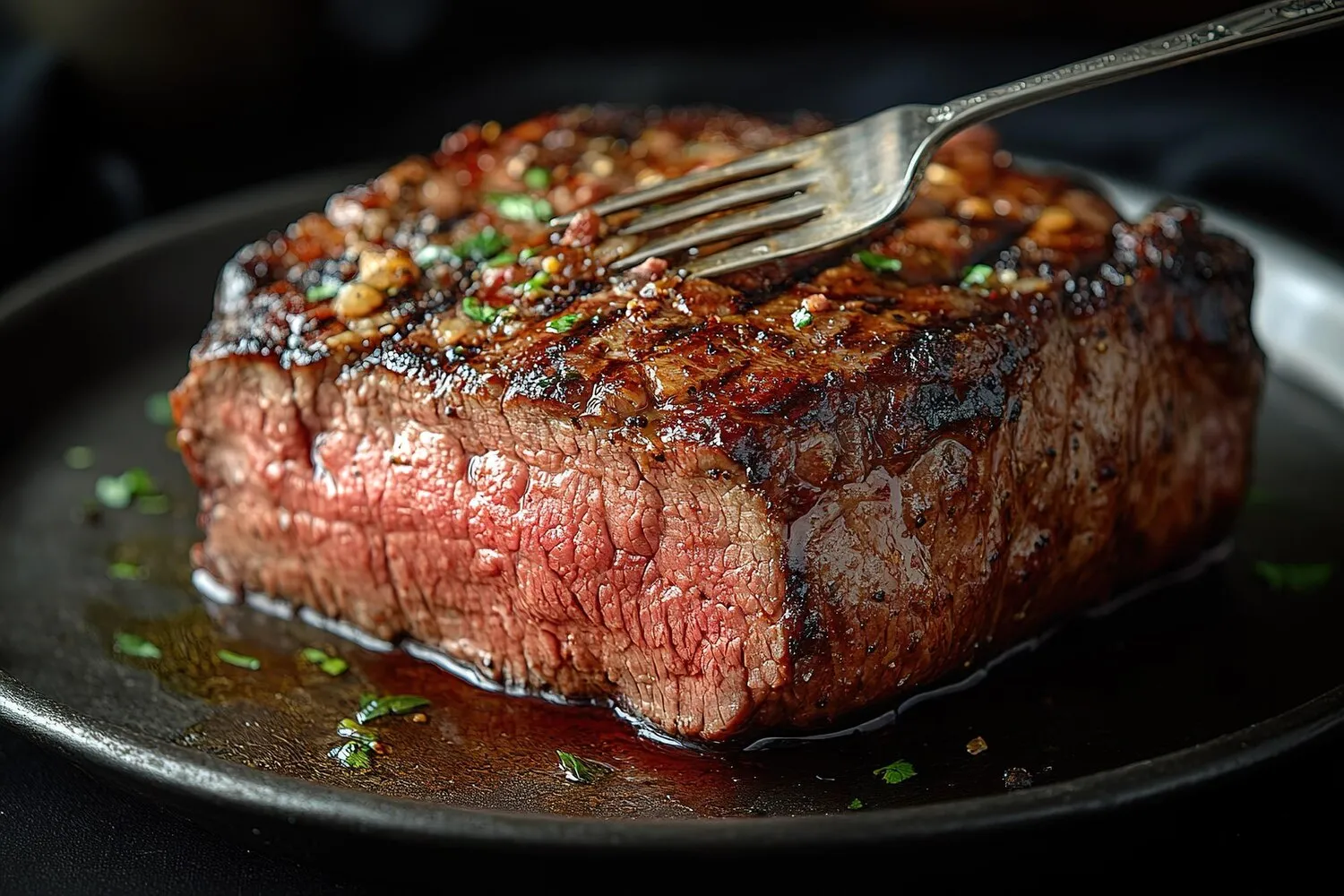
Chuletón a la piedra
A large ribeye steak served on a hot stone for self-cooking at the table.
Nutrition Facts
* The % Daily Value (DV) tells you how much a nutrient in a serving of food contributes to a daily diet. 2,000 calories a day is used for general nutrition advice.
The tradition of grilling meat over hot stones has ancient roots, likely originating from primitive cooking methods. However, 'Chuletón a la Piedra' as a dining experience is a relatively modern invention, evolving from the Spanish culture of enjoying high-quality beef and communal dining.
Chuletón a la Piedra is more than just a meal; it's a social experience, often enjoyed in restaurants as a shared dish among friends and family. It emphasizes the quality of the ingredients and the joy of cooking and eating together.
Communal Dining
The interactive nature of cooking on the stone encourages conversation and shared enjoyment, making it a popular choice for social gatherings.
Emphasis on Quality
The dish highlights the importance of high-quality beef, reflecting a appreciation for regional produce and traditional farming practices.
DIY aspect
The do-it-yourself aspect of the meal places you directly in charge of cooking it just right.
The primary flavor is the rich, beefy taste of the chuletón itself, enhanced by simple seasonings. The interactive cooking aspect allows diners to control the level of char and doneness, influencing the final flavor profile.
The 'chuletón' is a thick-cut ribeye steak, typically from Galician Blond (Rubia Gallega) cattle or other high-quality breeds. It's usually seasoned simply with coarse sea salt, sometimes with a drizzle of olive oil. The hot stone sears the exterior, creating a Maillard reaction that intensifies the meaty flavors. The absence of heavy sauces allows the natural taste of the beef to shine. Cooking on the stone imparts a subtle smoky flavour.
Stone Temperature
Ensure the stone is sufficiently hot but not smoking excessively before placing the meat. A moderately hot stone provides the best sear without burning the exterior.
Meat Thickness
Cut the chuletón into thin slices before cooking on the stone. This allows for quicker and more even cooking.
Seasoning
Use high-quality sea salt and a touch of olive oil. Avoid overpowering seasonings that mask the flavor of the beef.
Resting the Meat
While each slice is cooked individually, you can allow the already cooked slices to rest for a few minutes before eating, which will redistribute the juices.
Ventilation
Make sure the restaurant is adequately ventilated since the hot stone cooking will cause some smoke.
Explore additional Grilled dishes and restaurants
Explore GrilledDiscover top dining spots and culinary experiences in Gijón.
Explore GijónLearn more about the food culture, restaurant scene, and culinary heritage of Spain.
Explore Spain
